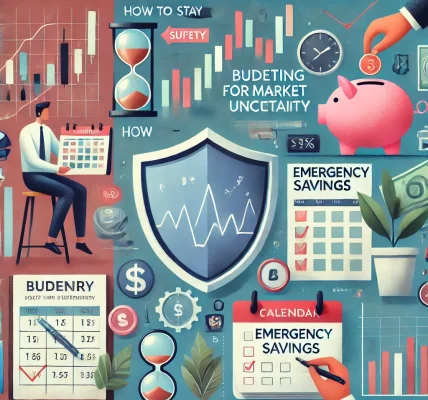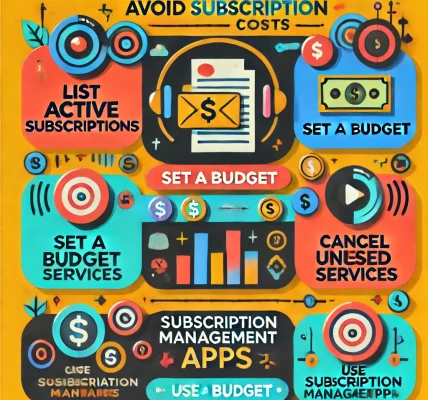10 Simple Ways to Track Your Monthly Expenses: A Smart Approach to Managing Your Finances
Managing finances efficiently is key to building wealth and staying financially secure. A crucial step in taking control of your financial future is to keep track of your expenses. When you know where your money is going, you can make informed decisions, identify areas to cut costs, and direct more funds toward your savings or investments. In this blog, we will explore 10 simple ways to track your monthly expenses and manage your budget effectively.
1. Create a Monthly Budget Plan
A monthly budget is your financial blueprint. To start, list your sources of income and categorize your expenses into fixed (like rent, utilities, and insurance) and variable (like groceries, entertainment, and dining out). Using a budgeting tool like Mint, YNAB (You Need A Budget), or even a simple spreadsheet can help you track everything in real time. Regularly updating your budget ensures you’re staying on track and can quickly spot any overspending.
SEO Tip: Use keywords like “create a monthly budget,” “budget planning tips,” and “track monthly expenses” to attract search engine traffic.
2. Use Expense Tracking Apps
Technology has made tracking your spending easier than ever. Apps such as Mint, PocketGuard, or EveryDollar automatically link to your bank and credit card accounts to track every expense. These apps categorize your spending, help you set savings goals, and even send notifications if you’re nearing budget limits.
SEO Tip: Include “best expense tracking apps” and “expense tracking for beginners” for search optimization.
3. Keep a Daily Spending Log
If you prefer a more hands-on approach, keeping a daily spending log is a great way to stay accountable. Write down every purchase, no matter how small, and categorize each expense. This method helps create a clear picture of your spending habits. You can use a physical notebook or a digital tool like Google Sheets.
SEO Tip: Target keywords like “daily spending log” and “track daily expenses.”
4. Review Bank Statements Regularly
At the end of each month, review your bank and credit card statements. Identify your recurring expenses (subscriptions, bills, etc.) and spot any areas where you might have overspent. By understanding your financial habits, you can adjust your future spending.
SEO Tip: Use terms like “review bank statements” and “monthly financial review” for SEO benefits.
5. Set Up Alerts for Spending Limits
Many banks and financial institutions allow you to set spending alerts. These alerts notify you when you’ve spent a certain amount of money in a given category (like dining out or entertainment). Setting up alerts can help you stay within your monthly limits.
SEO Tip: Use the keyword “spending alerts” and “track expenses automatically.”
6. Use Cash Envelopes for Variable Expenses
For categories like food, entertainment, or clothing, consider the cash envelope system. Withdraw a set amount of cash each month for these expenses and once the envelope is empty, stop spending. This method encourages conscious spending and keeps you within your budget.
SEO Tip: Include “cash envelope system” and “how to use cash envelopes.”
7. Analyze Your Subscriptions
Subscriptions can silently drain your budget each month. Take a close look at your monthly subscriptions—like streaming services, magazines, or gym memberships. Cancel any that you’re no longer using or that don’t add significant value to your life.
SEO Tip: Focus on “subscription tracking” and “cutting unnecessary subscriptions” for SEO engagement.
8. Track Impulse Purchases
Impulse buying can add up quickly. Keep track of unplanned purchases by writing them down as soon as you make them. This helps you become more mindful of your spending habits and make smarter buying decisions moving forward.
SEO Tip: Use keywords like “impulse buying tracking” and “cutting impulse purchases.”
9. Use Envelope or Jar Method for Specific Categories
For a fun and physical way to track spending, you can use the envelope or jar method. Label jars or envelopes with categories like “food,” “transportation,” and “entertainment,” and deposit cash into them each month. This hands-on method can be motivating and help you stick to your limits.
SEO Tip: Target keywords like “envelope budgeting method” and “jar method for budgeting.”
10. Track Your Progress with Reports
At the end of each month, create a financial report to track your progress. Summarize your income, expenses, and savings. This will help you understand your financial standing and allow you to make any necessary adjustments for the upcoming month.
SEO Tip: Include “monthly financial report” and “track your spending progress.”
Conclusion: Take Control of Your Finances Today
Tracking your expenses isn’t just about monitoring where your money goes—it’s about gaining control of your financial future. By implementing these 10 simple methods, you can take charge of your spending, reduce unnecessary costs, and make better financial decisions. Whether you prefer the simplicity of budgeting apps or the hands-on approach of the envelope system, find the method that works best for you and stick with it. Over time, these small changes will help you create a healthier financial life.




